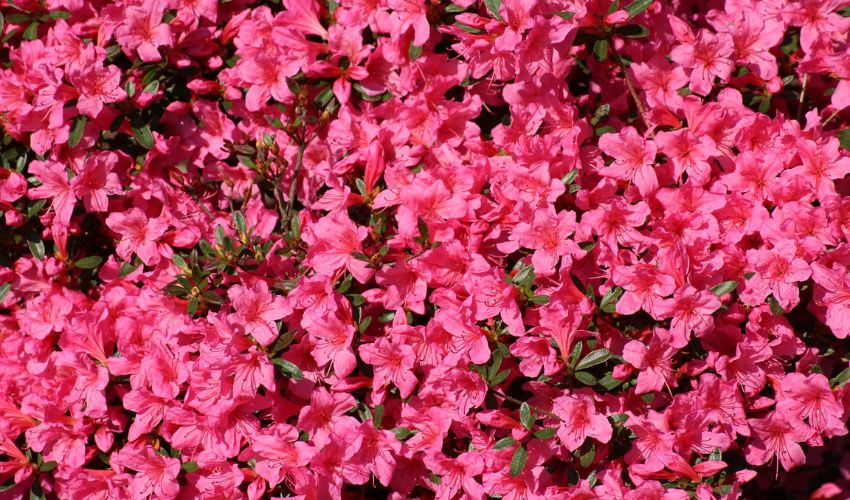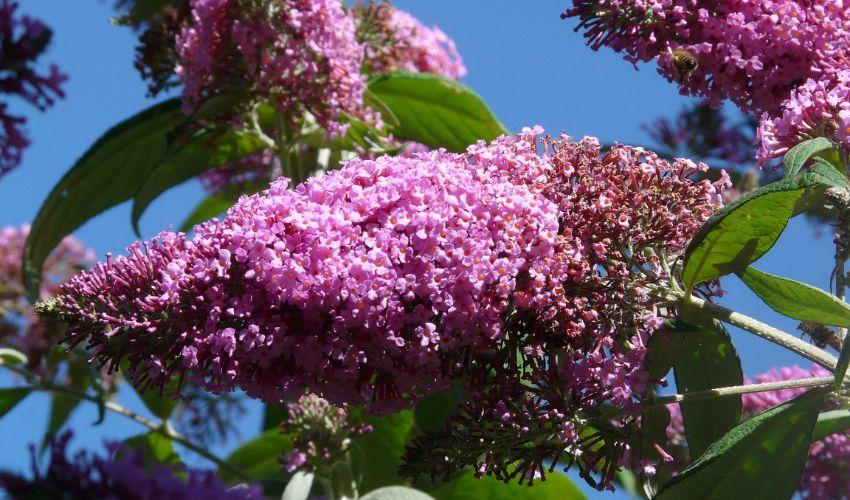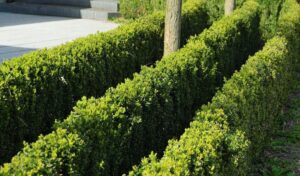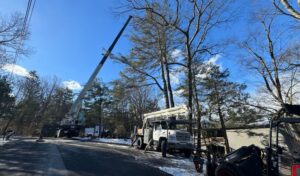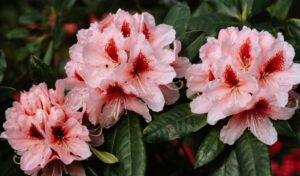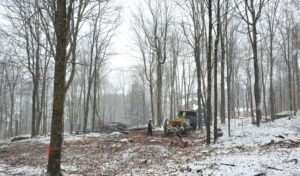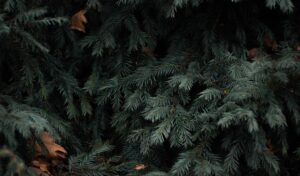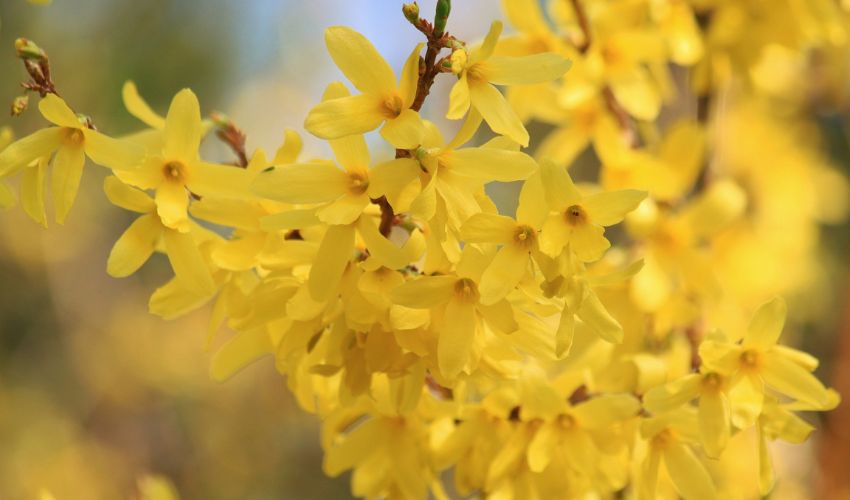
Many beautiful flowering shrubs thrive in the Hudson Valley area of New York. But have you ever wondered why we prune some bushes in the spring and others in summer? While pruning has a number of benefits in itself, what we prune and the time we prune specific flowering ornamentals is all about maximizing and extending bloom. In this article, we’ll explore the following:
- What to cut off when pruning flowering shrubs
- How to know when to prune your ornamental shrubs
- Pruning tips for spring flowering shrubs
- Pruning tips for shrubs that bloom in summer
What’s Cut Off When We Prune Flowering Shrubs?
There are several types of wood or branches you should cut off when it’s time to prune your flowering shrubs, including:
- Dead Wood – Remove dead wood to provide the rest of the shrub with maximum sunlight and air circulation so it can bloom. Dead wood pruning allows the shrub to focus its energy on new, healthy growth.
- Weak Wood – Prune weak wood to help your flowering shrub grow into a beneficial shape that will maximize health and blooming.
- Suckers/Water Sprouts – Prune these thin, fast-growing shoots so your shrub can devote energy to blooming. Prune them close to the stem they sprout from.
- Crossing or Rubbing Branches – Prune any branches that are crossing over one another as well as any branches that are rubbing against each other. Keep the branches that are growing outward to maximize the shrub’s flowering.
When to Prune Your Flowering Shrubs in the Hudson Valley
Cutting back your flowering shrubs will make them look beautiful and maximize the number and size of flowers when it blooms – but only if you prune them at the right time of year. Before getting out your pruning shears, you’ll need to know whether your shrub flowers in spring or in summer.
Be sure you understand how and where to make proper pruning cuts. Proper pruning will increase the size and number of flowers your shrub produces. Take the time to prune correctly and maximize your bloom!
Then follow the guidelines below for when to trim your flowering shrubs.
Pruning Spring Flowering Shrubs
Spring flowering shrubs typically bloom on old growth from the previous season, and the buds form before the winter sets in.
Prune spring-blooming bushes very soon after the spring flowers fade. If you cut them back in winter or early spring (before they flower), you’ll remove all of that year’s blossoms.
New York Shrubs That Bloom in Spring
If you’re not sure when your landscape bushes bloom, check the list of spring-blooming shrubs below. This handy list from Cornell University also includes pruning tips for each plant.
- Almond, Flowering (Prunus) – Prune branches to shape the plant.
- Azalea – Prune branches to promote new growth. Remove sucker shoots from the base of the plant.
- Beauty bush (Kolkwitzia) – Prune old wood as necessary to promote new growth.
- Barberry (Berberis) – Prune small, weak twigs to promote the growth of vigorous shoots that will provide more foliage color in the fall.
- Blueberry (Vaccinium) – Prune small, weak twigs to promote the growth of vigorous shoots that will provide more foliage color in the fall.
- Broom (Cytisus) – Prune to control the size
- Burning bush (Euonymus) – Prune to control shape and size when used as a hedge. Remove crowded branches of single plants.
- Crab apple (Malus) – Prune to shape the plant and to remove old wood so new growth can develop.
- Currant (Ribes) – Remove 3-year-old wood to promote new growth.
- Deutzia – Remove 3-year-old wood to promote new growth.
- Dogwood (Cornus florida and C. mas) – Prune 3-year-old stems of shrubs to promote new growth. Trees may be grown to their natural shape without pruning.
- Elder (Sambucus nigra) – Prune to shape the plant
- Enkianthus, red vein (Enkianthus campanulatus) – Prune to shape the plant. Only slight pruning is needed.
- Firethorn (Pyracantha) – Prune lightly to control size and shape. Severe pruning reduces the number of berries on the plant.
- Forsythia – Cut old stems to the ground as necessary to promote new growth.
- Fringetree (Chionanthus virginicus) – Prune old stems and branches as necessary to control size.
- Garland flower (Daphne cneorum) – Prune to control size and shape. Severe pruning may be needed to keep the plant from becoming ragged.
- Heath (Erica) – Prune to promote new growth. Severe pruning may be needed.
- Honeysuckle (Lonicera fragrantis-sima) – Prune old stems and branches as necessary to control size and promote new growth.
- Hydrangea (Hydrangea macrophylla hortensis) – Prune after flowering to promote new growth. Winter damage to flower buds may cause plants to produce only foliage and no flowers. When this happens, prune in summer after plants would have flowered; do not prune in winter or early spring.
- Kerria – Prune old wood to promote new growth.
- Lilac (Syringa) – Remove suckers and old flowers.
- Magnolia (Magnolia stellata) – Remove seed pods and, when necessary, prune branches to shape the plant.
- Mockorange (Philadelphus) – Prune 3-year-old wood to promote new growth.
- Ninebark (Physocar pus) – Prune crowded stems as necessary to thin them and to promote new growth.
- Pearl bush (Exochorda) – Thin branches to promote new growth and to make the plant bushier and less leggy.
- Privet (Ligustrum) – Cut 4-year-old wood to the ground to promote new growth. Clip several times in summer to shape the plants when used as a hedge.
- Quince, Flowering (Chaenomeles) – Cut out old wood as necessary to promote new growth.
- Rockspray (Cotoneaster) – Prune branches to control size and shape.
- Rose (Rosa) – Prune shrub roses to shape the plant and thin crowded branches; cut stems back to a healthy bud. Cut some of the old stems of rambling and climbing roses back to young shoots every year to thin the plants and promote new growth and larger flowers.
- Shadbush (Amelanchier) – Prune old stems and branches as necessary to control size.
- Snowball (Styrax) – Prune to shape the plant and to remove crowded branches. To grow a plant as a tree, cut out all stems except one; to grow as a shrub, leave several stems.
- Spirea (Spiraea) – Some common early flowering types are bridal wreaths, garlands, reeves, Thunberg, and Vanhoutte. Remove 3-year-old wood and prune branches to shape the plant.
- Sweetshrub (Calycanthus floridus) – Prune old stems and branches as necessary to control size.
- Tamarisk (Tamarix parviflora, T. tetrandra, and T. juniperina) – Prune stems and branches to control size and shape. Cut old stems to the ground if they become leggy and tall.
- Viburnum. Many kinds of Viburnum are grown for flowers and fruit. Some of the more common kinds are Viburnum burkwoodii, V. carlesi, V. fragrans, V. opulus, V. macrocephalum, V. sieboldi, and V. tomentosum marries. – Prune to control shape and height
- Weigela – Prune old branches and thin new growth as necessary to prevent crowding.
- Witch hazel (Hamamelis mollis) – Cut out old wood to control the size and promote new growth.
Pruning Summer Flowering Shrubs
Summer flowering shrubs bloom on stems that grow that season.
Prune your summer flowering shrubs in the dormant season before new growth begins in the spring.
Remember, proper pruning increases the number of flowers your shrub will produce, as well as the size of the individual blossoms. Taking the time to prune correctly will maximize bloom and is well worth the effort!
Hudson Valley Shrubs That Bloom in Summer
For specific pruning tips and care guidelines for summer blooming shrubs, check the below advice from Cornell University.
- Abelia – Prune to control size and shape and cut out crowded branches and stems to promote new growth. To keep the plant compact, remove wild shoots when they appear;
- Beautyberry (callicarpa japonica) – Cut stems about 12 inches from the ground every year to promote new growth.
- Bladder senna (Colutea) – Cut stems to the ground every year to promote new growth.
- Bluebeard (Caryopteris) – Cut stems to the ground every year to promote new growth.
- Bush clover (Lespedeza) – Prune to shape the plant and cut top growth to control the height.
- Butterfly bush (Buddleia davidii) – Cut stems to the ground every year to promote new growth and produce large flower stalks.
- Chastetree (Vilex) – Cut stems about 6 to 12 inches from the ground to promote new growth.
- Coralberry (Symphoricarpos) – Prune stems back to three or four buds. Cut out crowded stems and branches as necessary.
- Crape myrtle (Lagerstroemia) – Prune to control the shape and produce flowers. Lack of pruning will cause the plant to produce small or no flowers; heavy pruning is needed for vivid flower displays. The plant may be grown as a compact shrub or as a tree.
- Elder, red berry (Sambucus pubens) – Prune to shape the plant.
- Eleagnus – Every few years, prune to shape the plant and promote new growth.
- Heather (Calluna) – Cut stems to the ground to promote new growth and more flowers. Do not prune in summer or winter because plants will die; prune only in early spring before new growth starts.
- Hibiscus (Hibiscus rosa sinensis) – Prune stems, leaving two buds, to shape the plant and promote flowering.
- Honeysuckle, bush (Diervilla) – Prune to the ground to control spreading growth and to retain a compact appearance.
- Hydrangea (Hydrangea paniculata and H. arborescens) – Prune back to a few buds to promote new growth, and cut out crowded stems as necessary.
- Indigo bush (Amorpha) – Prune out old wood as necessary to promote new growth.
- Jersey tea (Ceanothus) – Cut stems about 6 inches from the ground every year to promote new growth.
- Magnolia (Magnolia virginiana) – Cut back tips of new shoots when necessary to shape the plant. Do not prune branches except when a badly shaped plant must be reshaped.
- Mintshrub (Elsholzia) – Cut stems to the ground every year to promote new growth.
- Raspberry, Flowering (Rubus) – Cut back stems after flowering to promote new growth.
- Rose (Rosa) – Prune all types of roses in summer when the flowers fade. Follow the instructions given for pruning spring-flowering roses.
- St. Johnswort (Hypericum) – Cut out crowded branches, and cut other branches back, leaving about two buds on each branch to promote new growth.
- Snowberry (Symphoricarpos) – Prune stems back to a few buds. Cut out crowded stems and branches as necessary.
- Spirea, false (Sorbaria) – Prune heavily every 3 or 4 years to control rapid growth; remove seed pods each year.
- Spirea (Spiraea) – Some common summer flowering types are Anthony Waterer, bumalda, Japanese, and billiard. Cut out crowded stems as necessary, and cut other stems back to a few buds. Remove seedpods when they form.
- Stephanandra – Prune out small, cold-damaged twigs.
- Sumac (Rhus) – The common types are staghorn and smooth sumac. Prune the stems to the ground to promote new growth. Sumac can be trained to grow as a tree when only one stem is allowed to grow.
- Summersweet (Cletha) – Prune to control the shape and spreading growth.
- Tamarisk (Tamarix hispida, T. pentandra, and T. odessa) – Remove seeds pods when they form. If plants become ragged and unattractive, cut them back to the ground to promote new growth.
Contact Hill Treekeepers to Keep Your Flowering Shrubs Beautiful
Did you know that flowering ornamentals (shrubs or bushes) are our specialty? Whether you need spring or summer tree and shrub pruning, the experts here at Hill Treekeepers in Newburgh, NY have the experience and skill to maximize bloom and keep your yard looking fantastic.
You can request a pruning quote online or call us at 914-214-7045 to schedule an estimate. We can’t wait to hear from you!
Share this online!
Get the highest quality of tree services for residential and commercial properties in the Hudson Valley area. We look forward to working with you!
TOPICS
Recent Articles
Don't Miss the Next Update!
Join the thousands of smart Hudson Valley residents who get the monthly newsletter from Hill Treekeepers. It's full of helpful information you won't want to miss!

